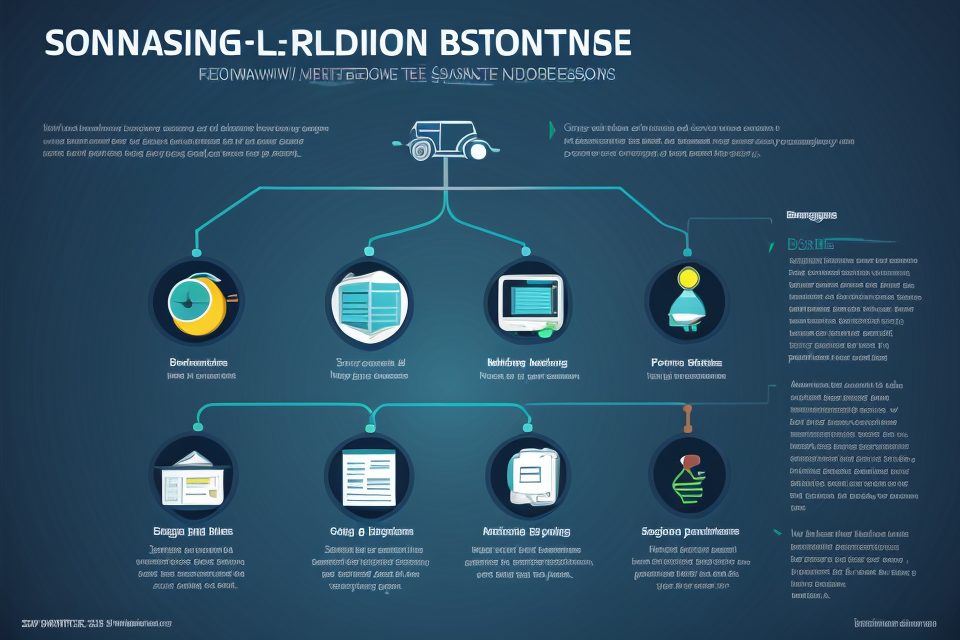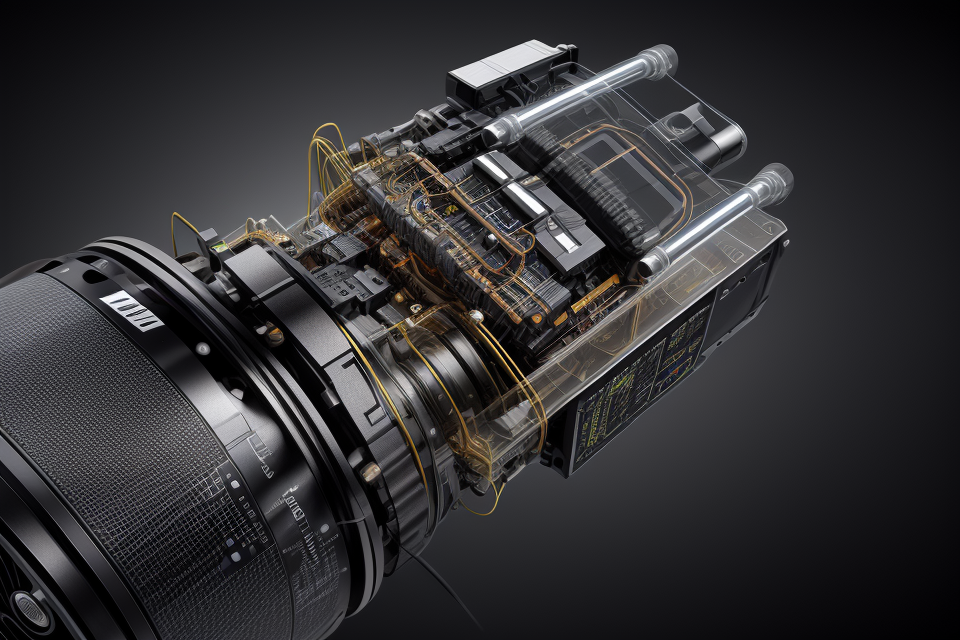
Sensors are an integral part of our daily lives, from the sensors in our smartphones that detect our touch to the sensors in our cars that monitor our speed. But have you ever wondered how these tiny devices work? In this article, we will explore the science behind sensor technology and how sensors work. We will delve into the different types of sensors, their applications, and the technology that enables them to function. Get ready to discover the fascinating world of sensors and how they bring our digital devices to life.
Understanding Sensor Technology
What are sensors?
Sensors are devices that detect and respond to physical inputs from the environment. They convert these inputs into electrical signals that can be interpreted by a computer or other electronic devices. Sensors are found in a wide range of applications, from simple household appliances to complex industrial machinery.
Types of sensors
There are many different types of sensors, each designed to detect specific physical properties. Some common types of sensors include:
- Temperature sensors: These sensors measure the temperature of the environment or a specific object.
- Pressure sensors: These sensors measure the pressure of the environment or a specific object.
- Light sensors: These sensors detect light levels in the environment.
- Sound sensors: These sensors detect sound waves in the environment.
- Motion sensors: These sensors detect movement in the environment.
How sensors work
The basic principle behind how sensors work is that they convert a physical input into an electrical signal. This is typically done using a transducer, which is a device that can convert one form of energy into another. For example, a temperature sensor might use a thermocouple as a transducer to convert the temperature of the environment into an electrical signal.
Once the transducer has converted the physical input into an electrical signal, it is sent to an amplifier, which amplifies the signal to a level that can be processed by other electronic devices. The amplified signal is then sent to a microcontroller or other processing device, which interprets the signal and takes appropriate action.
In some cases, the signal may be sent directly to a display or other output device, such as a speaker or motor. In other cases, the signal may be stored in memory or used to control other devices through a network connection.
Overall, sensors play a critical role in many different types of applications, from simple household appliances to complex industrial machinery. By converting physical inputs into electrical signals, sensors enable computers and other electronic devices to interact with the world around us in new and exciting ways.
The Science of Sensor Technology
Materials used in sensors
Sensors are devices that convert physical parameters, such as temperature, pressure, or light, into electrical signals. These signals can then be measured and analyzed to provide information about the physical parameters being measured. The materials used in sensors play a crucial role in determining their sensitivity and accuracy. Common materials used in sensors include metals, semiconductors, and ceramics. Each material has its own unique properties that make it suitable for specific types of sensors. For example, metals are often used in sensors that require high strength and durability, while semiconductors are used in sensors that require high sensitivity and accuracy.
How sensors convert physical parameters into electrical signals
Sensors convert physical parameters into electrical signals through a process known as transduction. Transduction involves the conversion of one form of energy into another. In sensors, this conversion involves the transformation of physical parameters, such as pressure or temperature, into electrical signals. This is achieved through the use of transducers, which are devices that convert one form of energy into another. Transducers used in sensors typically include piezoelectric materials, which generate electrical signals in response to mechanical stress, and thermocouples, which generate electrical signals in response to temperature changes.
Advantages and limitations of sensor technology
Sensor technology has numerous advantages, including increased efficiency, improved safety, and enhanced performance. Sensors can be used to monitor and control a wide range of processes and systems, from industrial processes to consumer products. However, sensor technology also has its limitations. One major limitation is the cost of sensor technology, which can be prohibitively expensive for some applications. Additionally, sensor technology is subject to interference and noise, which can affect the accuracy and reliability of sensor readings. Finally, sensor technology requires regular maintenance and calibration to ensure accurate and reliable measurements.
Applications of Sensor Technology
Industrial applications
Sensor technology has numerous industrial applications that help in improving the efficiency and productivity of various industries. In manufacturing, sensors are used to monitor and control the production process, ensuring that the products meet the required standards. For instance, sensors are used to measure temperature, pressure, and flow rate in manufacturing processes, which helps in optimizing the production process. In addition, sensors are used in quality control to ensure that the products meet the required specifications.
Consumer electronics
Sensor technology has also revolutionized the consumer electronics industry. Smartphones, for instance, use sensors to detect motion, orientation, and light. These sensors enable the phone to respond to user inputs and adjust the screen brightness according to the ambient light. Other consumer electronics, such as smartwatches and fitness trackers, use sensors to monitor various physical parameters, such as heart rate, blood oxygen levels, and sleep patterns. This data can be used to track the user’s health and fitness level, enabling them to make informed decisions about their lifestyle.
Healthcare
Sensor technology has significant applications in healthcare, enabling the development of advanced medical devices and treatments. For instance, sensors are used to monitor vital signs, such as heart rate, blood pressure, and oxygen saturation. This data can be used to diagnose various medical conditions and monitor the patient’s health status. In addition, sensors are used in medical devices, such as insulin pumps and continuous glucose monitors, to help patients manage chronic conditions.
Environmental monitoring
Sensor technology is also used in environmental monitoring to collect data on various environmental parameters, such as temperature, humidity, and air quality. This data can be used to track changes in the environment and develop strategies to mitigate the impact of human activities on the environment. For instance, sensors are used to monitor air quality in cities, enabling authorities to take measures to reduce air pollution. In addition, sensors are used in weather forecasting to collect data on temperature, humidity, and wind speed, which helps in predicting weather patterns.
FAQs
1. What is a sensor?
A sensor is a device that detects and responds to physical inputs, such as light, heat, motion, and pressure. Sensors convert these physical inputs into electrical signals that can be processed by a computer or other electronic devices.
2. How do sensors work?
Sensors work by converting physical inputs into electrical signals. This is typically done using a physical phenomenon, such as the change in resistance of a material when exposed to heat or the movement of a magnet when exposed to a magnetic field. These signals are then amplified and processed by an electronic circuit to provide an output that can be used by a computer or other electronic device.
3. What are some common types of sensors?
There are many types of sensors, including temperature sensors, light sensors, motion sensors, pressure sensors, and proximity sensors. Each type of sensor is designed to detect a specific type of physical input and convert it into an electrical signal.
4. How are sensors used in technology?
Sensors are used in a wide range of technology applications, including consumer electronics, medical devices, industrial automation, and automotive systems. They are often used to monitor and control the environment, such as in HVAC systems, or to detect and respond to physical inputs, such as in touchscreens and other user interfaces.
5. What is the future of sensor technology?
Sensor technology is expected to continue to play an important role in many fields, including healthcare, transportation, and environmental monitoring. Advances in materials science and nanotechnology are likely to lead to the development of new types of sensors with improved performance and capabilities. Additionally, the growth of the Internet of Things (IoT) is expected to drive demand for sensors that can be integrated into everyday objects and devices.


